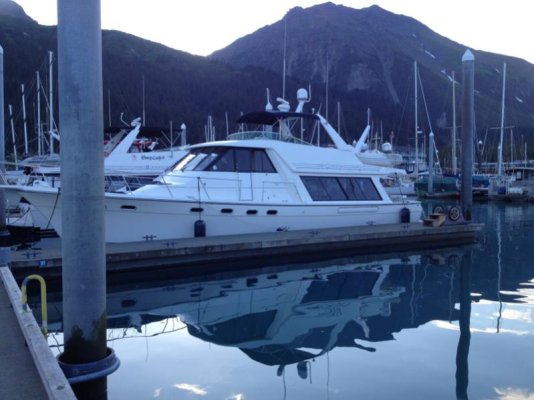Newbie here with several questions regarding the pros and cons of certain features on blue water trawlers. Not sure if this should go under General Discussion or Liveaboards…
My envisioned scenario is a couple crewed 50’-60’ liveaboard passage maker, basing out of the PNW, with an emphasis on cruising Alaskan waters. I don’t own a boat, have never owned a boat, and am merely day-dreaming about Nordhavns & Kadey-Krogens.
That said…
1. Wet lockers: How do they work? Convenience or something you can’t live without?
2. Pilot house berthing & head: For a couple crewed trawler making overnight ocean passages, is an enclosed off-watch pilot house cabin truly useful or is an open-air berth behind pilot house seating adequate? Under the same conditions, is a pilot house head just nice to have… or a critical feature?
3. Forward vs. aft pilot house design with regard to embarking and recovering tenders: Pros & Cons? I am especially interested in difficulty considerations under rough conditions or emergency.
4. In some boat interior schematics, I have seen showers incorporating small oval tubs and a bench. Are there advantages to this style over a conventional shower stall?
5. Things never being equal, I’ll ask anyway: For a live aboard lifestyle, would you rather have more salon length or more aft cockpit (and lazarette) length?
Thanks in advance...
My envisioned scenario is a couple crewed 50’-60’ liveaboard passage maker, basing out of the PNW, with an emphasis on cruising Alaskan waters. I don’t own a boat, have never owned a boat, and am merely day-dreaming about Nordhavns & Kadey-Krogens.
That said…
1. Wet lockers: How do they work? Convenience or something you can’t live without?
2. Pilot house berthing & head: For a couple crewed trawler making overnight ocean passages, is an enclosed off-watch pilot house cabin truly useful or is an open-air berth behind pilot house seating adequate? Under the same conditions, is a pilot house head just nice to have… or a critical feature?
3. Forward vs. aft pilot house design with regard to embarking and recovering tenders: Pros & Cons? I am especially interested in difficulty considerations under rough conditions or emergency.
4. In some boat interior schematics, I have seen showers incorporating small oval tubs and a bench. Are there advantages to this style over a conventional shower stall?
5. Things never being equal, I’ll ask anyway: For a live aboard lifestyle, would you rather have more salon length or more aft cockpit (and lazarette) length?
Thanks in advance...










 )
)